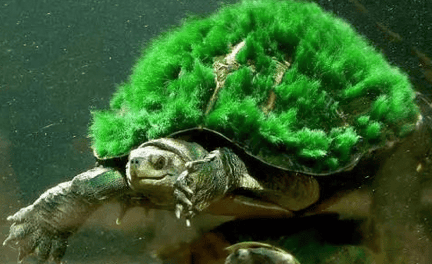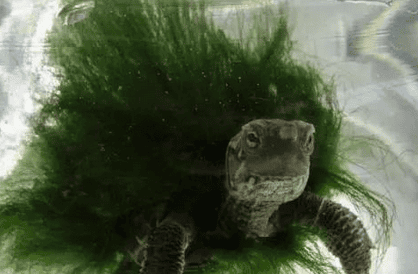Although the cultured green turtle has grown "green hair", its future management is very important. As the saying goes, "Three parts to nourish, seven parts to manage." If not managed well, the "green hair" may fall off or turn yellow.
The green turtle is a combination of animals and plants. During management, the biological characteristics of the two must be organically combined.

1. Feeding
The food habits of green-haired turtles vary depending on the turtle. But they generally eat small fish, shrimp, lean pork, etc. Feed once every 2 days in spring and autumn, and once every 3-4 days in summer. It is advisable that the turtle can finish it each time. No feeding in winter.
2. Change the water
Green turtles live in the water for a long time. Their feces, shed skin and debris accelerate the change of water quality, thus affecting the growth of algae. The frequency of water changes depends on the season. In summer, due to high temperatures, the water must be changed after feeding. Change the water once every 3 to 4 days in spring and autumn. In winter, it depends on the quality of the water.
When changing the water, first prepare a basin of clean water. Wash the turtle once in the original container, then put it into the prepared basin to comb the "green hair", and comb it gently with a sparse comb.
Finally, wash the container, add fresh water, and put the turtle in it. When changing water, you should pay attention to the changes in the temperature of the old and new water. Generally, the temperature difference should not exceed about 3℃.
3. Light
Light is the basic condition for the growth of Green Turtle algae. If the light is insufficient or the light is too strong, the algae will easily turn yellow and white; the most suitable light for the algae is scattered sunlight.
In spring and autumn, the tank should be placed outdoors in the sun for 3-6 hours. In summer, due to the strong light, the tank can be placed directly outdoors for direct sunlight, so radiation or a shade grid should be built. winter. Move the turtle outdoors to expose it to sunlight at noon, but it should not be moved out when the weather is cold to prevent the turtle from freezing.

4. Overwintering
The hibernation period of the turtle is from late October to April of the following year. When the temperature drops to 10-1CC, the turtle stops eating and does not move.
Healthy turtles hibernate naturally, change the water once every 2 to 3 weeks, and increase the light appropriately. When the severe cold comes, you need to pay attention to insulation. Weak turtles should be kept warm.

 扫一扫微信交流
扫一扫微信交流
发布评论